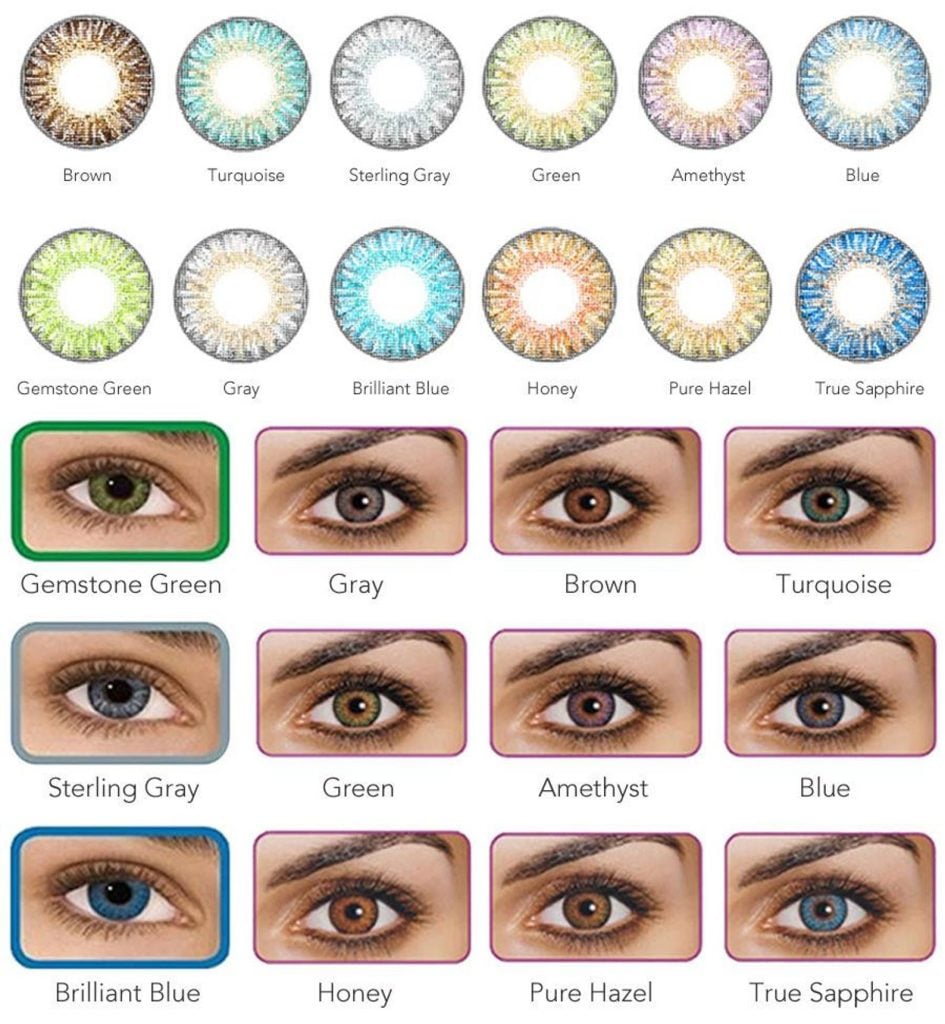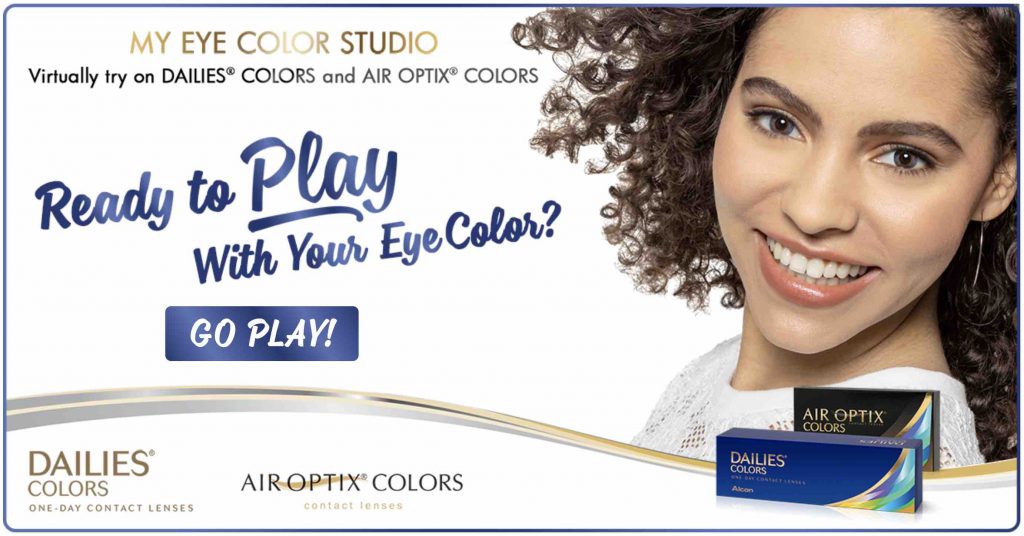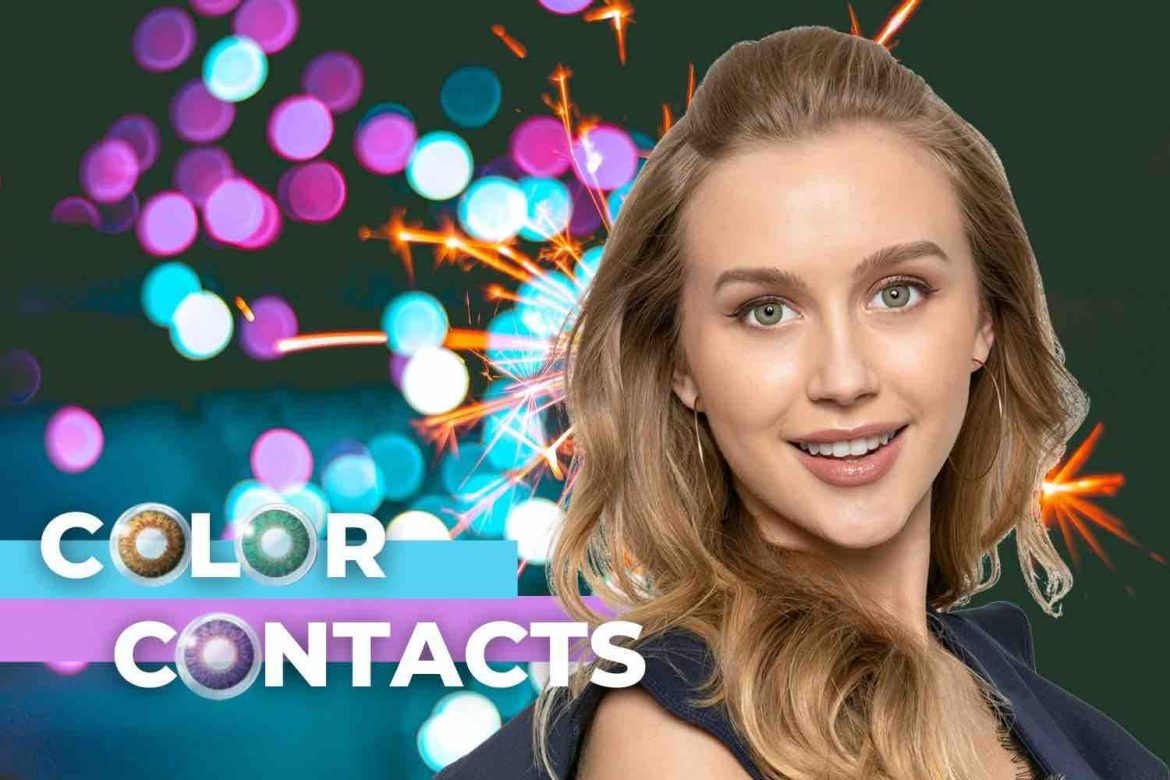![]()
Want to change your look? Sure, you can change your hairstyle or clothes, but an easy, fun, and temporary way to reinvent yourself is to change your eye color with different types of colored contacts.
You can match your eye color to your outfit or mood and rock any occasion. Take your pick… smoldering deep brown eyes, sparkly sky-blue eyes, mysterious smoky grey eyes. All the different types of colored contacts offer a lot of looks.
If you’re curious about color contact lenses, perhaps you’ll find some of the information I’ll offer here “eye-opening.”
Seeing clearly with colored contacts
Color contact lenses can correct your vision and alter the appearance of your eyes at the same time. However, if you want to play with your eye color, but don’t have vision correction needs, different types of colored contacts can accommodate you as well.
- Colored contacts come in many different optical powers to correct near-sightedness and farsightedness.
- Plano color contacts only change your eye color. They have no vision correction. They can even be worn in conjunction with prescription eyeglasses.
Yes, color contacts are safe
Let’s make this clear: the FDA considers all contact lenses medical devices. You must see an eye care professional and obtain a prescription to purchase corrective or plano contact lenses. Your eye doctor will find the optimum lens fit and design for your eyes.
When you get a fitting with your eye care professional, it’s likely you’ll have the opportunity to try different types of colored contacts to help you decide which look best on you.
As is the case for all types of contact lenses, to maintain safety, you simply need to follow the instructions provided by your eye care professional and maintain your lenses properly with recommended eyewear care practices.
A quick eye anatomy lesson (or refresher)
- The iris is the colored part of the eye—a complex pattern of colorful fibers that surrounds your pupil. It helps regulate the amount of light that enters the eye.
- The pupil is the black center of your eye. Its function is to let light in and focus it on the retina.
Colored contacts are created with colored dots, lines, and shapes designed to imitate the iris and provide a natural look. Your eye doctor fits the lenses to ensure they’re properly positioned, so you see through your pupil and not the colored edge of the lens.
The various tints of color contacts
Understand, color contacts are available with three types of tints:
- Opaque tint is a non-transparent tint that masks your eye color. If you have dark eyes you will need this tint to change your eye color.
- Enhancement tint is a see-through tint. This tint is designed to enhance the natural color of your eyes. If you have light-colored eyes and want to make them more vibrant these tints are for you.
- Visibility tint does not change the color of your eyes. It simply makes the lens visible so it is easier to see when you’re handling your contacts.
What look are you going for?
Once you’re armed with a contact lens design that fits and a prescription from your eye doctor, it’s time for the exciting part: selecting your colors.

Skin tone and hair color can influence your choice when looking through all the types of colored contacts. But ultimately, it depends on what look you are after. Do you want bold and daring? Or more subtle?
- For light eyes
Enhancement tints tend to work best with lighter eyes. Areas in the contact lens enable your natural color to blend with the color you choose.
- For dark eyes
If you have dark eyes, generally, an opaque tint will be more effective.
When you find the types of colored contacts you like, have fun with your look. Play with the look by adjusting your outfits, makeup, and jewelry.
Want to see what you’d like wearing different types of colored contacts?

All the color contacts sold at EZContacts are premium brands.
HERE’S WHERE TO GET THEM (PRICED RIGHT)


